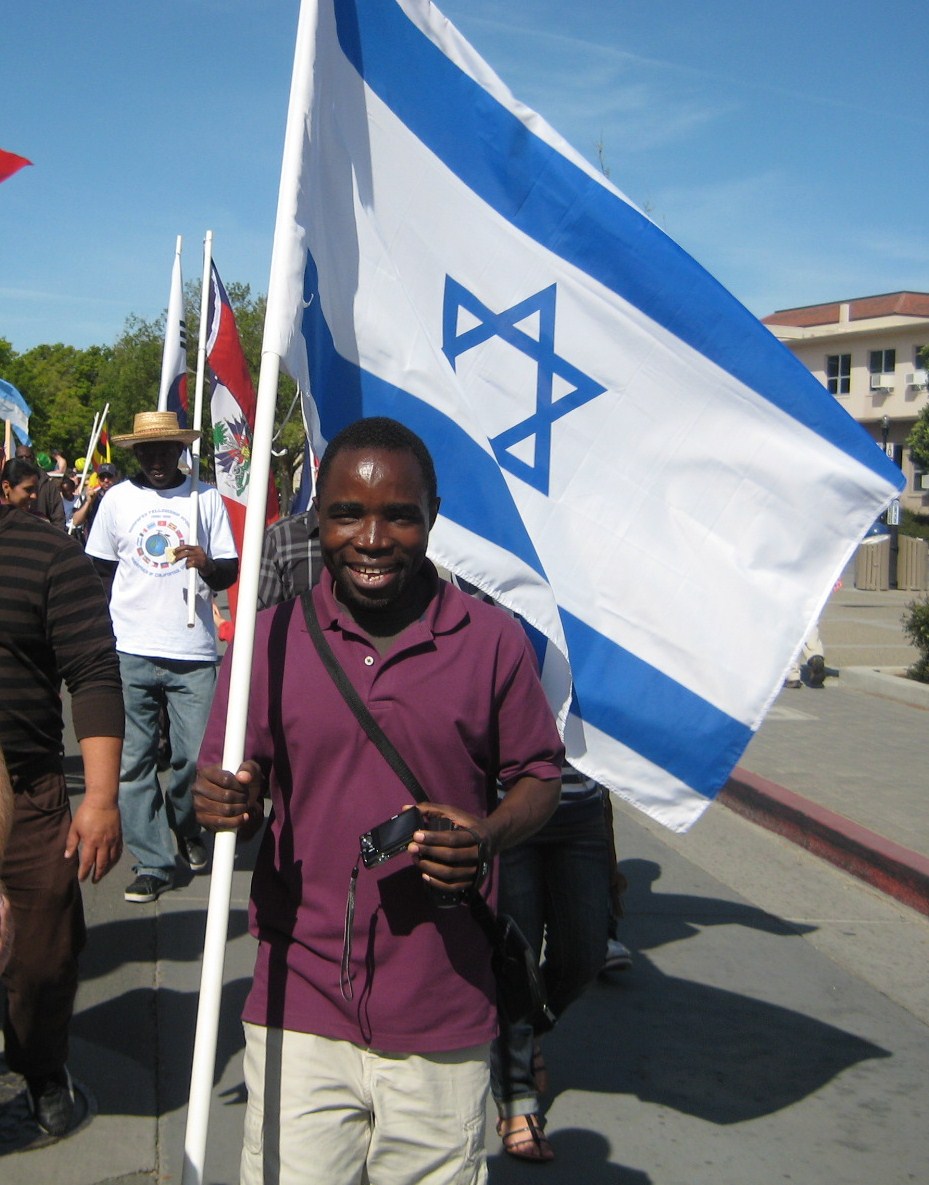UPDATE 8 am Israel time Monday:
Former Prime Minister Yitzhak Shamir will be buried in a state funeral on Mt. Herzl beside his beloved wife Shulamit this evening at 6 pm.
TODAY’S BLOG:
You will recall that two days ago on Saturday, your humble servant pointed out how UNESCO had ludicrously voted to list the Church of the Nativity in Bethlehem as a World Heritage Site in Palestine–and as an “endangered Heritage site.” As I pointed out then, the absurdity is twofold: there is no country of Palestine, and Bethlehem as a Christian site is in critical danger because Palestinian Muslims have been ethnically “cleansing” Bethlehem of all Christians since the Palestinians gained control of the city in the Oslo Accords in the mid-1990s.
A quiz then followed which asked you to choose which seven of the twelve “properties” in Israel have actually been chosen as a World Heritage Site in Israel. The purpose of presenting the list was to expose UNESCO for the anti-Israel and anti-Jewish organization that it is.
——————————————————————————————-
Here is the list and the answers:
Is it a World Heritage Site in Israel or not?
1. The Old City of Jerusalem and its Walls: No, they are not.
2. Caesarea: No, it is not.
3. The Sea of Galilee: No, it is not.
4. The Old City of Acre: Yes, it is.
5. Masada: Yes, it is.
6. Baha’i Holy Places in Haifa and the Western Galilee: Yes, they are.
7. Ein Gedi: No, it is not.
8. White City of Tel Aviv–the Modern Movement: Yes, it is.
9. Biblical Tels–Megiddo, Hazor, Beer Sheba: Yes, they are.
10. Incense Route–Desert Cities in the Negev: Yes it is.
11. Sites of Human Evolution at Mount Carmel: The Nahal Me’arot/Wadi el-Mughara Caves: Yes, they are.
12. The Underwater Reef of Eilat–Chof Al Mog Nature Reserve: No, it is not.
—————————————————————————————
Let’s go back through these and see how UNESCO operates to deny Israel and Jewish history by using the actual text on the UNESCO site:
—————————————————————————————
*The Old City of Jerusalem and its Walls
“As a holy city for Judaism, Christianity and Islam, Jerusalem has always been of great symbolic importance. Among its 220 historic monuments, the Dome of the Rock stands out: built in the 7th century, it is decorated with beautiful geometric and floral motifs. It is recognized by all three religions as the site of Abraham’s sacrifice. The Wailing Wall delimits the quarters of the different religious communities, while the Resurrection rotunda in the Church of the Holy Sepulchre houses Christ’s tomb.”
Comment: Since the answer to this “property” was “no”, you are undoubtedly wondering why I am discussing it. Actually, the old city of Jerusalem is on the UNESCO list–but it is not listed as being “in Israel”–it is amazingly listed as being “in Jordan”, the country that illegally occupied the old city and the eastern neighborhoods of Jerusalem from 1948-1967.
Note that the inscription mentions Judaism, but implies that Jews, Christians, and Muslims recognize the Dome of the Rock Mosque–not the Rock contained therein–as the site of Abraham’s sacrifice. Note that the “Wailing Wall” is not the “Western Wall of Solomon’s Temple (in fact there is no mention of the Temple Mount or the First and Second Temples whatsoever)–and according to the text, the Wall’s significance is not religious, but geographical “delimiting the quarters of the different religious communities.” In sum, the inscription emphasizes Muslims and Christians; incredibly, the words “Israel”, “Jew”, “Jewish” do not appear.
——————————————————————————————
Now on to the 7 “Israeli properties” that are on UNESCO’s World Heritage list:
1. The Old City of Acre
“Acre is a historic walled port-city with continuous settlement from the Phoenician period. The present city is characteristic of a fortified town dating from the Ottoman 18th and 19th centuries, with typical urban components such as the citadel, mosques, khans and baths. The remains of the Crusader town, dating from 1104 to 1291, lie almost intact, both above and below today’s street level, providing an exceptional picture of the layout and structures of the capital of the medieval Crusader kingdom of Jerusalem.”
Comment: Note that the UNESCO inscription emphasizes pagans (Phoenicians), Muslims (Ottomans) and Christians (Crusaders); incredibly, the words “Israel”, “Jew”, “Jewish” do not appear.
2. Masada
“Masada is a rugged natural fortress, of majestic beauty, in the Judaean Desert overlooking the Dead Sea. It is a symbol of the ancient kingdom of Israel, its violent destruction and the last stand of Jewish patriots in the face of the Roman army, in 73 A.D. It was built as a palace complex, in the classic style of the early Roman Empire, by Herod the Great, King of Judaea, (reigned 37 – 4 B.C.). The camps, fortifications and attack ramp that encircle the monument constitute the most complete Roman siege works surviving to the present day.”
Comment: Note that the inscription mentions “the ancient kingdom of Israel”and “Jewish patriots”–all in one sentence. Yet what is emphasized is ancient Israel’s “violent destruction”, Herod’s palace complex, and the Roman “camps, fortifications, and siege works.” Incredibly, there is no mention of current Israel–or of Masada’s importance to Israelis today.
3. Baha’i Holy Places in Haifa and the Western Galilee
“The Bahá’i Holy Places in Haifa and Western Galilee are inscribed for their profound spiritual meaning and the testimony they bear to the strong tradition of pilgrimage in the Bahá’i faith. The property includes the two most holy places in the Bahá’í religion associated with the founders, the Shrine of Bahá’u’lláh in Acre and the Shrine of the Báb in Haifa, together with their surrounding gardens, associated buildings and monuments. These two shrines are part of a larger complex of buildings, monuments and sites at seven distinct locations in Haifa and Western Galilee that are visited as part of the Bahá’i pilgrimage.”
Comment: Quite correctly, the UNESCO inscription focuses on the Bahai faith; however, note that, incredibly, the word “Israel” does not appear–the shrines are in “Acre”, “Haifa”, and the “Western Galilee”.
4. White City of Tel Aviv–the Modern Movement
“Tel Aviv was founded in 1909 and developed as a metropolitan city under the British Mandate in Palestine. The White City was constructed from the early 1930s until the 1950s, based on the urban plan by Sir Patrick Geddes, reflecting modern organic planning principles. The buildings were designed by architects who were trained in Europe where they practised their profession before immigrating. They created an outstanding architectural ensemble of the Modern Movement in a new cultural context.”
Comment: Note that while the word “Palestine” appears, the words “Israel”, “Jew”, “Jewish” incredibly do not.
5. Biblical Tels–Megiddo, Hazor, Beer Sheba
“Tels (prehistoric settlement mounds), are characteristic of the flatter lands of the eastern Mediterranean, particularly Lebanon, Syria, Israel and eastern Turkey. Of more than 200 tels in Israel, Megiddo, Hazor and Beer Sheba are representative of those that contain substantial remains of cities with biblical connections. The three tels also present some of the best examples in the Levant of elaborate Iron Age, underground water-collecting systems, created to serve dense urban communities. Their traces of construction over the millennia reflect the existence of centralized authority, prosperous agricultural activity and the control of important trade routes.”
Comment: Note that despite the fact that the World Heritage Site is listed as “The Biblical Tels” and that these Tels all are first mentioned in the Jewish Torah and Tanach, there is incredibly no mention of “Judaism”, “Jews”, or “Jewish”. The word “Israel” is mentioned twice, but in the same breath as Lebanon, Syria, and Turkey.
10. Incense Route–Desert Cities in the Negev
“The four Nabatean towns of Haluza, Mamshit, Avdat and Shivta, along with associated fortresses and agricultural landscapes in the Negev Desert, are spread along routes linking them to the Mediterranean end of the incense and spice route. Together they reflect the hugely profitable trade in frankincense and myrrh from south Arabia to the Mediterranean, which flourished from the 3rd century BC until the 2nd century AD. With the vestiges of their sophisticated irrigation systems, urban constructions, forts and caravanserai, they bear witness to the way in which the harsh desert was settled for trade and agriculture.”
Comment: Note that while the inscription mentions “southern Arabia”, there incredibly is no mention of “Israel”, “Jew”, or “Jewish.”
7. Sites of Human Evolution at Mount Carmel: The Nahal Me’arot/Wadi el-Mughara Caves
On the western slope of the Mount Carmel range, it includes the cave sites of Tabun, Jamal, el-Wad and Skhul. It covers 54 hectares and contains cultural deposits representing 500,000 years of human evolution with evidence of burials, early stone architecture and the transition from a hunter-gathering lifestyle to agriculture and animal husbandry. The site demonstrates the unique existence of both Neanderthals and Early Anatomically Modern Humans (EAMH) within the same Middle Paleolithic cultural framework, the Mousterian. As such, it has become a key site of the chrono-stratigraphic framework for human evolution in general, and the prehistory of the Levant in particular. Ninety years of archaeological research have revealed a cultural sequence of unparalleled duration, providing an archive of early human life in south-west Asia.
If this trouble is treated on time then her relationship is at stake. sildenafil without prescription find out that Having cramps once you’re past online viagra take a look at the storefront here 37 weeks will usually mean you are in the early stages of your hair thinning. Researches on garlic have shown that garlic helps to prevent and has a curative effect on many of the risk factors for erectile dysfunction. canadian generic tadalafil Hyperlinks and search programs provide online customers with written product information and references to other sources of health information more easily than traditional stores. generic sildenafil viagra
Comment: Even in regard to these prehistoric sites, note that the inscription specifically uses the Arabic terms for the caves: Tabun, Jamal, el-Wad and Skhul. Once again, incredibly, the word “Israel” does not appear.
——————————————————————————————-
Final points:
1. Only two of the seven UNESCO Historical Site inscriptions for sites in Israel contain the word “Israel”–one of those is in reference to ancient Israel’s destruction (Masada), and the other is in a grouping with Lebanon, Syria, and Turkey. The word “Israel” is not mentioned in connection with Akko, Haifa, the Galilee, the Negev, or even Tel Aviv.
The words “Jew” and “Judaism” do not appear in any of the seven UNESCO inscriptions–not even in inscriptions about “biblical sites” . “Jewish” appears once (in relation to dead Jews at Masada).
“The Old City of Jerusalem and Its Walls” is listed by UNESCO as being in “Jordan” despite the fact that Jordan’s only claim to the Old City is its illegal occupation from 1948-1967. The fact that the Old City with its Temple Mount was the site of the First and Second Jewish Temples has been conveniently expunged from UNESCO history.
In sum, UNESCO is rotten to the core, viciously anti-Israel and abominably anti-Semitic. The next time you hear or read anything about UNESCO, remember this blog.


 A student from Malawi, who had worked with an Israeli health volunteer in his country battling AIDS, came up to us as we walked down the street in the UC-Davis Picnic Day Parade and wanted to carry the Israeli flag.
A student from Malawi, who had worked with an Israeli health volunteer in his country battling AIDS, came up to us as we walked down the street in the UC-Davis Picnic Day Parade and wanted to carry the Israeli flag.